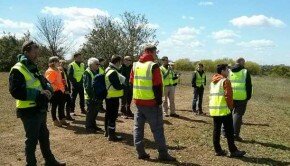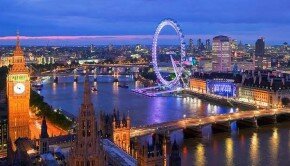Interview: Garden designer Dan Pearson on London’s planned Garden Bridge
Plans for London’s proposed Garden Bridge are beginning to flourish following the recent confirmation that the UK government and Transport for London (TfL) will each commit £30 million (US$50 million) of funding to the project. Conceived by Joanna Lumley, designed by architect Thomas Heatherwick and to be planted by renowned horticulturist Dan Pearson, the bridge will provide a green public space and a link between the bohemian South Bank and lively Covent Garden.
The design won a TfL tender to improve pedestrian access across the Thames and will span the river between Temple Station and the South Bank. It is currently awaiting the results a pre-planning consultation carried out by TfL, which are due in the next few months. Application for planning consent is anticipated to be submitted in May 2014 and assuming it is successful, construction will begin in 2015.
Gizmag spoke to Dan Pearson about his vision for the project.
What did you think when you heard about the Garden Bridge concept?
That it was a crazy, brilliant idea, and that I would be mad not to agree to help create a garden that sailed over the Thames!
How did you begin to think about it as a project and what was your process for designing the gardens?
I started by looking at the history of the two banks of the river. The South Bank was formerly the site of Lambeth Marsh, (still present in the local street names of Upper and Lower Marsh), and is believed to have been reclaimed from a larger expanse of water after the Roman occupation. Osier beds for willow weaving were also once very common all along the south bank, as they thrive in the wet conditions. So the planting nearest the south bank is comprised of the sorts of plants that would have colonised reclaimed marshland – the Pioneers – like birch, alder, poplar and sedges, perennial plants like wild roses and meadow herbs like woodruff, geranium, violet and primrose.
The development of the north bank of the Thames occurred much earlier and it was a key part of development in the Victorian era that gardens were created all along Victoria Embankment from Whitehall to Waterloo Bridge and then on to the Temple. So the planting closest to the north bank references gardens more strongly with a range of familiar ornamental garden plants like fuchsias, cultivated geraniums, day lilies and ornamental trees and shrubs.
So, the development of the narrative of the planting on the bridge from south to north tells the story of the development of culture within the capital over the centuries, with a gradual progression across the bridge from the wild to the cultivated.
The plant choice for the bridge is also very much determined by the specific conditions posed by the open location over the river. So only plants which will cope with the exposure have been chosen, with the most exposed position in the middle of the bridge being dedicated to a selection of hardy plants mostly native to cliff and maritime habitats.
How have you worked with Thomas Heatherwick throughout the project?
Thomas has been extremely trusting as he and his team have got on with the extremely complex job of designing the bridge itself. I talked Thomas and Joanna (Lumley) through my approach to the planting early on in the project and they were very happy to let me develop my aesthetic ideas alongside the technical development of the bridge. Joanna’s only request was that there be an apple tree and a Christmas tree. Where Thomas, his team and we (me and my studio), have come together is in discussions over some of the complex technical issues such as how the available soil depth affects the planting plan, choosing the right materials and how to enhance the visitor experience. We have also been working closely together to make sure that plant heights and volumes create a safe environment for visitors and do not obscure, but complement river views.
What do you want people to feel when they visit the bridge?
I want people to feel as if they have arrived in the most magical garden imaginable. Floating above the water with views of St.Paul’s and Westminster, I want them to feel sheltered and protected by the plants. I want them to feel the power of nature in the city and be aware of the wildlife sharing this new route across the river with them. I want them to be able to return at any day of the year and always find that the garden has something to offer and that it will never be the same place twice.
What do you think the bridge can bring to London and how will it fit in?
London is one of the greenest cities in the world and the Garden Bridge will create a green link across the river that will allow people to journey across London and never be far from plants. London has excellent public parks but few gardens open to the public. I think it will become a new iconic destination attracting people from all over the world.
Source: The Garden Bridge Trust
One Response to Interview: Garden designer Dan Pearson on London’s planned Garden Bridge
Leave a Reply
You must be logged in to post a comment.









Pingback: Interview: Garden designer Dan Pearson on Londo...